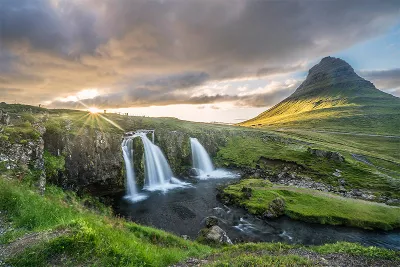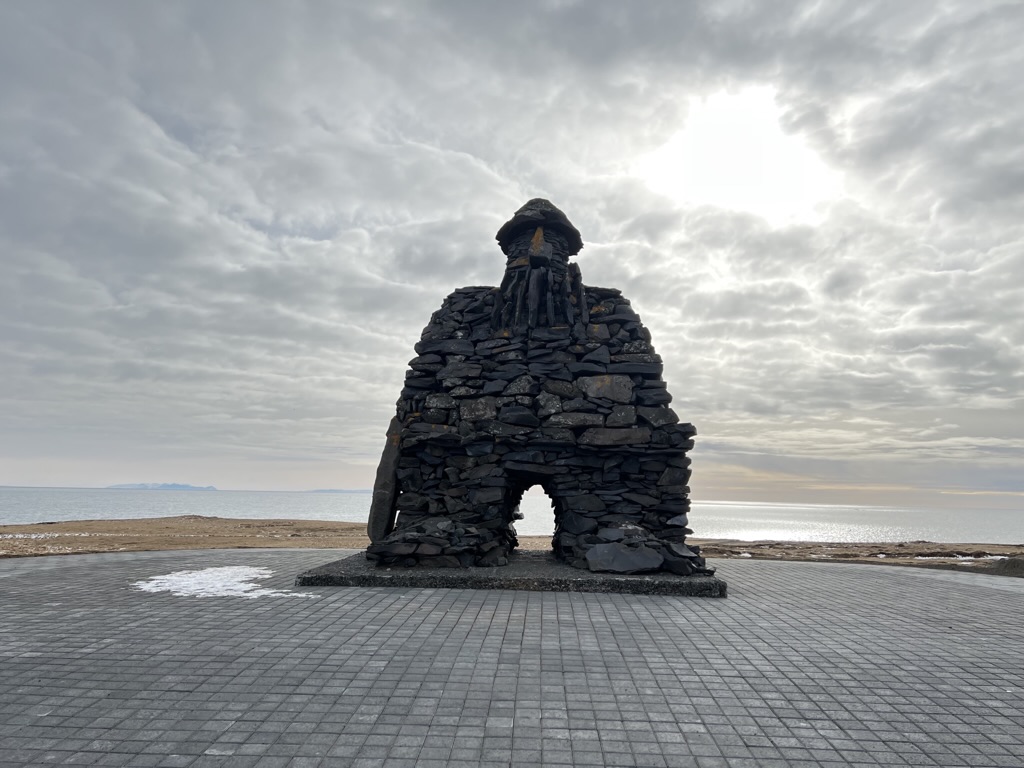Due to Icelands recent popularity, you might already know the top 16 reasons to visit Iceland. However, some of these might surprise you. Iceland is known for its unique and relatively untouched nature, renewable energy and boasts of having one of the purest water in the world. Tourists are especially drawn to Iceland because of its natural beauty whose landscape is nothing short of amazing and its natural phenomenon including the Midnight Sun and Northern Lights. It contains exquisite attraction sites and various landscapes including waterfalls, lava, lakes, volcanos, mountains, lagoons, craters, and glaciers.
Unique Natural Phenomena
1. Northern Lights
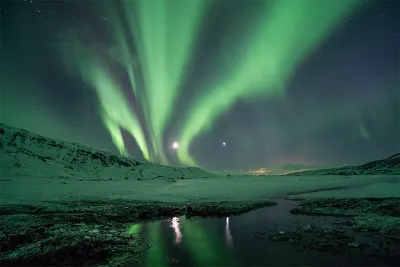
The Aurora Borealis, or Northern Lights, is one of the top reasons to visit Iceland. This mesmerizing astronomical phenomenon occurs when particles from the sun interact with the Earth’s magnetic field, creating vivid lights that dance across the sky. The best time to see the Northern Lights is from October to March, when conditions are ideal with clear skies and cold winter nights. To experience this natural wonder, popular tours include the Northern Lights Private Tour and the Northern Lights Cruise.
2. Midnight Sun
Iceland is faced with extreme fluctuation in daylight throughout the year. In contrast with long, dark winter nights, the summers in Iceland are known for being extremely bright. The Midnight Sun is a natural phenomenon in Iceland that occurs during the summer months, which causes the day to remain very bright and during the brightest weeks the sun even remains visible for 24 hours, without fully setting. While it may take some time to adjust, the Midnight Sun offers a unique opportunity to explore Iceland’s landscapes at any hour.
3. Geothermal Baths
Iceland’s volcanic activity has given rise to numerous geothermal pools and hot springs—a highlight among the top reasons to visit Iceland. These natural and man-made baths provide relaxation and therapeutic benefits. Some must-visit geothermal areas include:
- Secret Lagoon – was constructed in 1891 and therefore the oldest geothermal pool in the country. It is a popular stop for tourist doing the famous Golden Circle route.
- Krossneslaug – a geothermal pool located at the Coastline Strandir in Westfjords. The mesmerizing landscape and sound of the waves really put you at ease.
- Blue Lagoon – is the most popular natural bath, situated in Grindavík, a short drive from Keflavik International Airport. Silica Minerals and Algae found in the water are said to be therapeutic for various skin disorders including conditions like Eczema and Psoriasis. You can combine it with an airport transfer.
- Sky Lagoon – is a brand new geothermal lagoon and a luxurous spa that opened in April 2021, located in Kópavogur, just about 10 minutes drive from Reykjavik.
- Landmannalaugar – is a true paradise on earth with its vast rhyolite mountains, hot springs and nature, located in the highlands of Iceland. It is a popular hiking trail and a place to bath. More info
- Lake Myvatn Nature Bath – Geothermal Lagoon and Spa located north of Iceland, about a 6-hour drive from Reykjavik. The mineral rich water contains Sulphur that is said to have beneficial effect on Asthma and respiratory conditions as well as some trace minerals that are beneficial for the skin.
- Reykjadalur – literally means ‘Smoke Valley’ is a popular hiking trail, about 1 hour walk from Hveragerði (about 40 minutes drive from Reykjavík), that leads to a natural hot spring you can bath in. The best way to get there is by car.
4. Cultural Heritage
Iceland is known for its literary heritage and preservation of the renowned Icelandic Sagas, one of the oldest literary treasures dating back to the 13th and 14th centuries, which depicts stories about the lives of the early settlers, the Vikings and their lives and struggles. To get an insight into the life of the Vikings, we recommend visiting the Saga Museum in Reykjavik or if you are going North, you should definitely make a stop at Sauðárkrókur and witness and interact with Vikings through immersive VR technology.
For an enjoyable dining experience, where the waiters are dressed in Viking garments, we recommend visiting the Viking Village in Hafnarfjörður, a 15 minute drive from Reykjavík. If you go there, you should go truly Viking style and try out fermented shark with a shot of Brennivín.
Iceland’s official language is Icelandic and you can learn more about it in this post, which is a Nordic language that descended from Old Norse. Due to the isolation, the language hasn’t changed much, thus Icelanders can still understand the Icelandic Sagas without much difficulty.
We recommend visiting the following historic places and monuments from the age of Vikings:
- The first established Parlament at Þingvellir was founded by the Vikings in 930
- Reykholt is one of the most historical places in Iceland and home of Snorri Sturluson, one of the most important figures in Icelandic medieval history and the first known Icelandic author. His works include Heimskringla and Egils Saga. If interested you could also check out Snorrastofa Museum and visit Snorralaug.
- Stöng Commonwealth Farm at Þjórsárdalur Valley, by Hjálparfoss Waterfall. It is a replica of a Viking turf longhouse that was buried under volcanic ash and was reconstructed in 1974.
- Glaumbær Turf Farmhouse – a preserved turf farm dating back to 874 AD
- Eiríksstaðir Living Museum – to get insight into the life of the renowned Vikings Eirík the Red and his son Leif the Lucky.
5. Volcanic Activity
Iceland is thought to be one of the youngest landmasses in the world and situated on a volcanic hotspot it owes its existence to a volcanic fissure in the Mid-Atlantic Ridge, where the American and the Eurasian tectonic plates meet. Every year the country grows by 5 cm causing a larger rift between these plates. These cracks can be seen at Þingvellir (part of the Golden Circle route) and by the symbolic footbridge called Bridge Between Continents, located on Reykjanes Peninsula.
Being a country with highly active volcanic activity, Iceland has often caused media attention. The eruption in Eyjafjallajökull in 2010 is definitely the most famous one. Currently, there is an active eruption in Iceland in Fagradalsfjall volcano, located on Reykjanes Peninsula. You can watch the eruption live or take a tour there.
6. Unique Icelandic Horses
The Icelandic horse is unique for its specific Icelandic gait called ‘tölt’ and it is the only horse breed in the world that is able to perform five gaits. Most horses only possess three or four gaits. The most common gaits are walk, trot, and canter or gallop, but the Icelandic horse has two additional gaits, flying pace and tölt.
The horse descends from breeds the Vikings settlers brought with them from the British Isles around the 9th century. Due to isolation and strict regulation the Icelandic horse is one of the purest breeds in the world.

The breed is also widely celebrated for its spirited and gentle temperament. By nature, they are fairly little but strong and tend to be around 140 cm tall. By international standards, horse breeds shorter than 1.47 meters and called ponies. Despite its small stature, the horse is versatile, sturdy, and able to endure hard winters.
7. Delicious Tap Water
Is the Icelandic tap water safe to drink? This is a typical question, tourists ask upon traveling to Iceland. Icelanders are so fortunate to have a limitless reserve of delicious and pure ice-cold water straight from the tap. The Icelandic tap water is said to be one of the purest water in the world. It contains no additives or contaminants and is not treated with chlorine or any other chemicals. The Icelandic tap water comes from natural springs filtered through layers of lava decades before reaching the tap.
Unfortunately, many tourists are unaware of this and purchase bottles everywhere they go, but as everybody knows, plastic bottles are more harmful to the body and the environment. Massive marketing has also established Icelandic bottled water abroad, including brands like Icelandic Glacial and Iceland Natural Spring Water.
However, it has to be said that sometimes, the tap water is mixed with warm water which is rich in sulfur and has a very distinct smell. So, just make sure to let the water run a bit prior to drinking it.
The water is so clean that you can even drink directly from rivers and lakes in Iceland. Also, the water at Silfra fissure, a popular spot for snorkeling in Iceland, located at Þingvellir, is so pure that it’s said to be the clearest water on Earth providing incredible underwater visibility.
8. Black Beaches
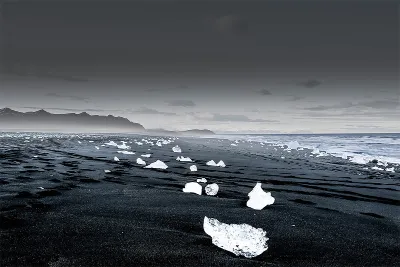
Iceland is unique for its magnitude of black sand beaches which provide some of the most awe-inspiring landscapes in the country with a bit of a mystical undertone that both tourists and locals are intrigued by. Although, Iceland is not a sunbathing resort, as the sea is too cold to bathe in, every year tourists flock to the black sand beaches. This distinct black color of the sand is formed by erosion of volcanic materials including lava and basalts, as a result of volcanic activity and its hot running lava which solidified upon hitting the cold water.
The most famous black sand beaches in Iceland are:
Reynisfjara Beach – located on the south coast, by the charming village Vík. With its stunning basalt rock formation, it is unarguable one of the most beautiful black sand beach in Iceland and the most visited one.
Diamond Beach – or Breiðamerkursandur is a black sand beach with chunks of washed-up glaciers that shine like diamonds against the black colored sand, located by Jökulsárlón Glacier Lagoon on the south coast.
Djúpalónssandur – or the Black Lava Pearl Beach as it is often referred to, is located on the west coast of Iceland, near Snæfellsjökull volcano, west of Iceland.
Others worth mentioning are Sólheimasandur on the south coast, where you find a plane wreck, and Stokknes in Westfjords.
9. Icelandic Cuisine

Icelandic gastronomy is a reason enough to visit the country. It is not only “a feast for the eyes, but also a banquet for your taste buds”. In fact, Iceland is one of the top nations to visit and many tourists and chefs flock to the country for the intriguing Food and Fun festival, which is held every year in February or March. Icelandic food is also very healthy due to the abundance of crystal clear water and fresh fish, clean air, and freely grazing cows and sheep.
Rooted in tradition are many fermented dishes from the age of Vikings which are unusual and can get time to adjust to, but modern cuisine has evolved and contains a variety of delicious dishes. The main pillars of Icelandic cuisine include lamb, potatoes, fish, seafood, and dairy.
10. Safety
Iceland is the ideal tourist destination and a very safe place to visit, due to its low crime rate and exquisite air quality. In fact, it was ranked as the ‘World’s Safest Country in 2019’ by the Global Finance Magazine. There are no ‘bad’ neighborhoods, children can play alone in the street and nobody needs a bodyguard, not even the president. Icelanders are said to be one of the friendliest nations and everybody speaks English, as children start learning English in school from the age of twelve. It is also a safe country to visit during the COVID-19 pandemic and has in fact been marked as a green country.
11. Natural Diversity
Iceland has grown tremendously through the years as a tourist destination and is often referred to as the Land of Fire and Ice. The tourists are especially intrigued by its stunning nature and its diverse landscape with striking contrasts of glaciers, volcanoes, waterfalls, mountains, black sand beaches, lava fields, craters, rivers, and lakes. Thus, everybody should find something that appeals to them, such as nature sightseeing tours or any activity, glacier tours, boat tours, hiking tours, horse riding tours, whale watching tours, dog sledding tours, ice climbing, or relaxing in geothermal water.
12. Music Festivals
Through the years Iceland has given birth to many talented tourists, including Björk, Gus Gus, Sigurrós, Of Monsters and Men, and Kaleo just to name a few. There are also numerous music festivals worth visiting, including Icelandic Airwaves, Aldrei fór ég suður and a national festival in Westman Island called Þjóðhátíð í eyjum. See more

13. Renewable Energy
Blessed with its abundance of clean and sustainable energy resources, Iceland has become a leader within eco-friendly energy production. Nearly the entire electricity of Iceland comes form renewable energy (99%), of which 27% of the electricity is provided by geothermal energy and about 73% from hydropower plants. While, over 40% of energy consumptions can be traced to households in most parts of the world, up to 90% of Icelandic households pride themselves of relying on geothermal water to heat up their homes. By the year of 2040, Iceland aims to become a carbon-neutral country, which is quite an achievement. In order to learn about the process of harnessing electricity through hydro-and geothermal energy, visit Hellisheiði Powerplant. There you can also learn how carbon dioxide from the air is converted into rocks.
14. Probably the most gay-friendly country

Iceland is believed to be one of the most gay-friendly destinations in the world. It is a country where queers are not only accepted but embraced. As a token of that, one of the central streets in downtown Reykjavik, Skólavörðurstígur, has been covered with rainbow-colored paint. Even though there is still progress to be made, LGBTQI people have largely the same rights as others. Gay marriage has been legalized and people are protected against discrimination, regardless of sexual orientation or gender identity. Every year lots of visitors attend the Reykjavik Gay Pride festival, which is usually held in the first week of August. See what Joey Amato had to say about traveling in Iceland as a queer traveler who went on a private South Coast tour with us.
15. Whales Around Iceland
Iceland has become one of the top destinations for whale watching. Favorable conditions make Iceland a breeding ground for a variety of whales, including an abundance of summer daylight and a unique mixture of warm and cold sea currents, which attract krill and fish. Some whale species stay in Icelandic waters year around, but the peak season for spotting a whale around Iceland is during the summer months, from May to September.
Various whale and dolphin species can be seen in Iceland, but the chance of spotting specific species depends on the location and the season. The main whale species that can be spotted around Iceland include Minke Whales, Humpback whales, Blue Whales, Fin whales, Orcas, White-beaked dolphins, and Harbor porpoises.
There are many places in Iceland where you can go whale watching, including Húsavík, Akureyri, Reykjavík, Ólafsvík, and Dalvík. In Reykjavík, you can choose a standard Whale Watching boat tour or go on a Rib Boat, which is incredibly fast and fun.
16. Amazing Puffins
Iceland is a breeding ground for one of the largest colonies of puffins. In fact, Iceland inhabits about 8-10 million puffins which contribute to more than 60% of the world’s entire Atlantic puffins population.
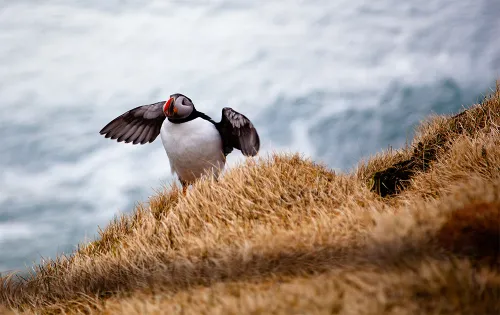
Many species of puffin exist, but the species that can be spotted around Iceland is called the Atlantic Puffin (Fratercula arctica) and sometimes it is referred to as the Icelandic Penguin, due to its resemblance. Although puffins can be seen as early as early April to late September, the peak season is between May and August. Locations, where puffins are regularly spotted in Iceland, include cliff Dyrhólaey on the south coast, Látrabjarg in the Westfjords, Ingólfshöfði and the Westman Islands.
Many companies offer a combination of Whale watching and Puffin tours. We highly recommend exploring the amazing puffins on a Rib Boat from Reykjavik Harbor.
If you’d like to explore our private tours or our new and unique small group tour you can email [email protected] for further information.
